Archive for the 'Asian cinema' Category
Get well soon, Richie-san
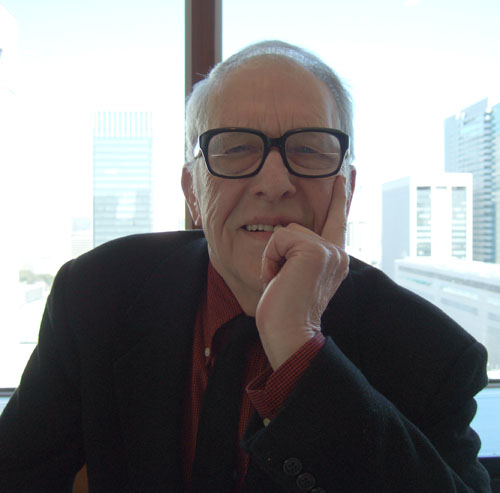
Donald Richie is in a Tokyo hospital recuperating from pneumonia.
If you’ve read a book on Japanese cinema or listened to a Criterion commentary, you probably know his voice. And if you admire Ozu or Kurosawa or Mizoguchi or Kinoshita or Oshima or virtually any other Japanese director, you have Donald to thank. Many of the films we consider classics would not have been seen in the west had Donald not convinced Japanese companies that there was a worldwide audience eager to know this country and its cinema. Gatekeeper, tastemaker, public intellectual, and memoirist, this exuberant 85-year-old has given us so much pleasure and wisdom that we should remind him how much he means to us.
You can send cards, letters, and well wishes to Donald Richie, c/o KiSMet, 1-2-7-8E Meguro, Meguro-ku, Tokyo Japan 153-0063.
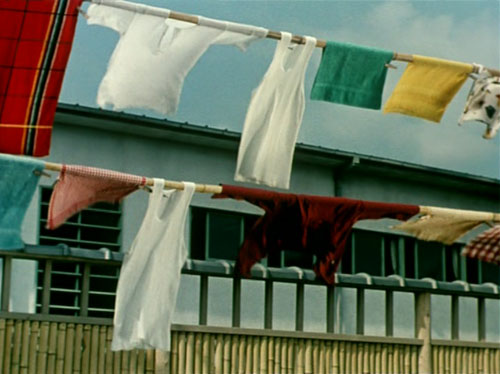
Wrapping up the ROW
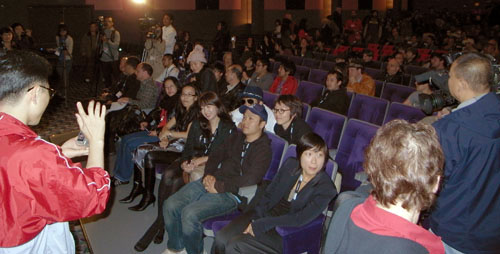
Paparazzi swarm over the nominees for the Dragons and Tigers Award at the Vancouver International Film Festival.
Kristin here:
Some final films from VIFF
So far Central American countries have produced fewer films than their neighbors to the north and south. So I couldn’t pass up The Wind and the Water, the first fiction feature made in Panama. Made by a collective of fifteen young indigenous people from the Kuna Yala archipelego under the leadership of MIT graduate and first-time director Vero Bollow, it’s a tale of threats to the paradisiacal island by developers who want to build a giant hotel there. It also reflects temptations for young people to desert their traditional lives on the islands for the attractions of nearby Panama City.
The contrast between the islands emerges through a simple tale. Machi, a young man from the islands, goes to the city for schooling and finds it grim and threatening. Rosy, a transplanted native who grew up there, aspires to be a model.

She returns to the islands for her grandfather’s funeral. Confronted with crude latrines and fish-head stews, she is initially miserable but gradually falls under the spell of the area’s beauty. Meanwhile her father works for the group planning to move the islands’ population to a new suburb and build their resort.
The plot is based loosely on that population’s vigorous efforts—successful so far—to fend off efforts of outsiders to gain control of the islands. I was reminded while watching it of the many classic documentaries of the 1930s and 1940s, like Song of Ceylon, shot by Americans and Europeans in exotic locales. For decades film scholars deplored the fact that the people who formed the subjects of such films were being portrayed by outsiders. The Wind and the Water, though a fiction film, has a strongly documentary thread running through it, but this time it is the local population making a film about their own situation.
 Bollow (right), who initially left MIT to live in Panama and bring digital technology to indigenous people, wrote the script along with the fifteen team members. She attended Vancouver and answered questions, but members of the team will be traveling with the film to other festivals.
Bollow (right), who initially left MIT to live in Panama and bring digital technology to indigenous people, wrote the script along with the fifteen team members. She attended Vancouver and answered questions, but members of the team will be traveling with the film to other festivals.
In some ways, Ozcan Alper’s debut feature, Autumn, is a classic art-house film. Yusuf, a student radical, is released after ten years in prison because he has a fatal lung disease. He returns to his home. He returns to his rural home in the eastern Turkish mountains and settles in with his widowed mother, keeping his illness secret. He tutors a local boy in math and perhaps falls in love with a melancholy prostitute struggling to support her child.
Many of the scenes consist of the hero lying or sitting in the yard, contemplating the surrounding mountains as autumn slowly changes them. David found the lack of dramatic action and the slow pace of the scenes to be overly familiar conventions of art cinema. No doubt the hero’s goals are de-dramatized, as when he promises a bicycle to the student should he succeed in mother or when very late in the film he decides to help the prostitute. There is one central motif that becomes overly emphatic. When Yusuf first notices the prostitute, she is buying a Russian novel; they simultaneously sit alone watching the same broadcast of Uncle Vanya; eventually she tells Yusuf that he’s like a character out of Russian literature. The film’s tone successfully suggests this comparison without our needing to have it made explicit.
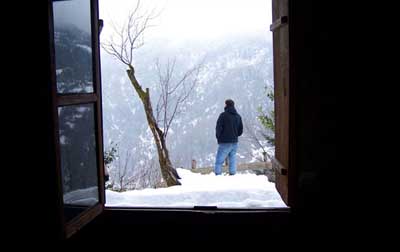
To me, the success of the film arises from the director’s integration of the landscape into the story. The prominence of the rugged landscape and the care with which the story is linked to the fall of leaves and the creeping of snow down the mountainsides lifts this above standard art-house fare. In this case, the fading of the year, beautifully brought into a central role by the cinematography, becomes linked more subtly to the hero’s plight.
Kill Daddy Goodnight, an Austrian film by veteran director Michael Glawogger, starts with a promising premise. The protagonist Ratz hates his father, a cold and critical government minister, and creates a videogame, “Kill Daddy Goodnight,” to wreak a fantasy revenge. Summoned by Mimi, a friend with whom he may or may not be in love, he abruptly flies to New York. She wants him to renovate the basement hideaway of her grandfather, a fugitive Nazi war criminal. Initially revolted, over the course of his work he comes to like the old man. Ratz also manages to find a sleazy internet entrepreneur willing to offer “Kill Daddy Goodnight” on his website, where it becomes an immediate success. Interspersed with this plot are scenes of an unidentified man (below) recording testimony against and visiting his childhood friend, who had worked for the Nazis during the war and killed his father.
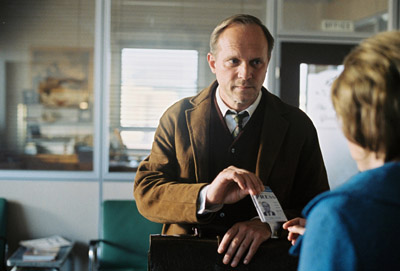
So far, so good. But the film’s already complex plot is overburdened by strong hints of Ratz’s incestuous desire for his sister, a thread that comes to little. Mimi’s motivations are confusing, and it’s hard to sympathize with any of the characters. Perhaps that was the intention, but my sense was that the two intriguing plotlines, which could have fit neatly together, were diffused by distractions and uncertainties.
I didn’t get to many documentaries, but being a lover of Vivaldi’s vocal music, I had to see Argippo Resurrected. It’s the fascinating tale of how Czech conductor and musicologist Ondrej Macek ingeniously tracked down the lost 1730 opera, which had originally been composed for Prague. He then staged the piece in one of the two perfectly preserved court theaters of the era, the Castle Theatre at Cesky Krumlov, two hours outside of Prague, near the Austrian border.
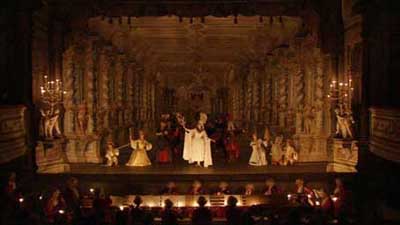
The other is at Drottningholm, outside Stockholm, where in 1999 David and I had the privilege of seeing The Garden, a new opera about Linnaeus. (It was the first premiere at the theater since it was sealed in the 18th century.) The original candles have prudently been replaced by electric replicas of one candlepower each, flickering realistically. The Cesky Krumlov theater still uses real candles to light both the stage and the musicians’ stands. I guess this says something about fire codes in Eastern Europe. I for one would be happy to risk it in order to have a thoroughly authentic experience, especially if a Vivaldi opera was playing.
It’s a complicated story to fit into 62 minutes. Director Dan Krames took a clever and effective approach, starting backwards. He shows the theater first, with its wooden framework, sets, and stage machinery. He then goes on to introduce some of the musicians and singers, in the process explaining the concept of authentic performance style to those who may not be familiar with it. We also get to see some short excerpts from rehearsals, so that we come to know the opera a little. Only then does Krames proceed to the tale of Macek’s search for the original manuscript and his laborious piecing-together of the individual arias. Macek makes an engaging subject, though he is so self-deprecating about his discovery that the film has to include another musicologist to explain just how extraordinary the accomplishment was.
Finally Macek takes us on a tour of Venice, showing the few surviving places associated with Vivaldi, whose life is little documented. Along the way, there are further excerpts from rehearsal for the production shown, featuring a collection of excellent singers. Krames told me that Argippo Resurrected should be released on DVD in about a year. In the meantime, a live recording of Macek’s production is available as a 2-CD set.
Some final photos
Film festivals aren’t just for watching movies, of course. They’re for seeing old friends, meeting new ones, and sharing meals—including the festival’s wonderful hand-made waffles—to talk about what we’ve seen. As usual, David had his camera in hand nearly all the time, as the accompanying images show.
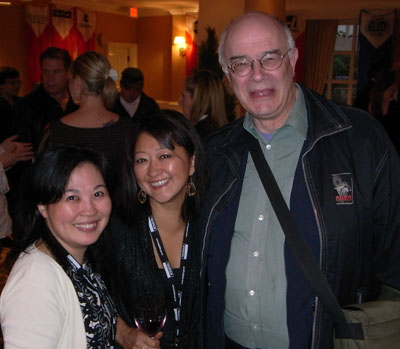
Theresa Ho, Eunhee Cha, and Tony Rayns: Three key players in the Vancouver Festival.

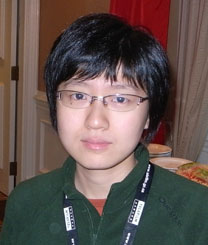
Chris Chong (director of Karaoke) and Liu Jiayin (Oxhide II).

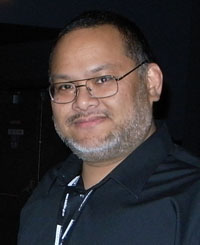
Bob Davis, of American Cinematographer, and Noel Vera, Critic after Dark.

Canadian corner: Lisa Roosen-Runge, Shelly Kraicer, and Peter Rist.

Get your Terimayo, Oroshi, and Okonomi here: Japadog, a Vancouver Institution.
Wantons and wontons
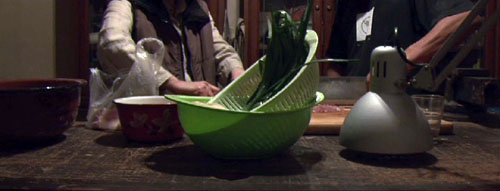
Oxhide II.
DB here, with more from the Vancouver film fest:
Two of the more innovative films I saw evoked film history—one explicitly, the other obliquely. Raya Martin’s Independencia is part of a planned series devoted to the history of the Philippines, told from the bottom up. In this first installment, villagers flee into the jungle to hide from the American “liberation” of their islands. The film centers on a mother and son who, joined by a woman the son finds, create a new family. After years, the son and the woman have a child, but their new life is threatened by the encroachment of the invaders.
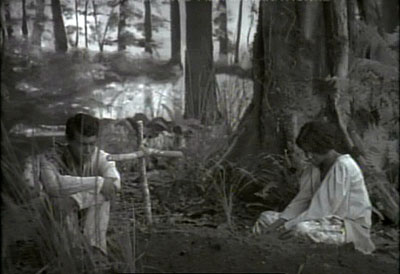
What sets Independencia apart is Martin’s effort to create the look and feel of a 1930s fiction feature. He shot the movie wholly in a studio, and the evidently faked backdrops are counterbalanced by gorgeously controlled lighting effects, and even dashes of color. Since virtually no Filipino films survive from this period, Martin gives us less a pastiche than a possibility, a sort of hypothetical archival film. The fact that the film makes aggressive use of Dolby sound, especially during a tremendous storm sequence, only adds to the sense of history being reimagined for today.
More traditional, at first glance, is Puccini and the Girl, a historical drama by Paolo Benenuti and Paolo Baroni. Facts of the case: In 1909, a maid in Puccini’s Tuscan villa, accused of being his concubine, committed suicide. But an autopsy revealed that she was a virgin.
The film’s reconstruction of what happened behind the scenes, tracing the veins of jealousy and deceit running through the household, relies on recent research into the tragedy.
At the same time, we have an homage to silent cinema. In most scenes we hear no dialogue: actors whisper at a distance from us, or simply conduct themselves without speaking. What words we do hear are recited pro forma (the Mass) or sung (in a waterside tavern, or in nondiegetic accompaniment). There is only one line of conversation, and that is given greater saliency by being a cry from the heart.
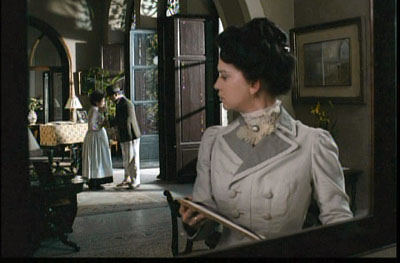
So we’re largely confronted with a silent film, accompanied by music and sound effects. To add to the estranging effect, characters communicate chiefly through letters and telegrams—exactly as in the films of the period. We hear the letters’ text read aloud, but the sense of stately compositions propelled by written commentary, distinctive features of 1910s cinema, remains. An unwitting homage, perhaps, but one that pleased this fan of classic tableau cinema.
Independencia was part of the Dragons and Tigers thread, one of the hallmarks of the Vancouver event. Year after year it gives an unequaled view of current Asian cinema. This year’s program, assembled by Tony Rayns and Shelly Kraicer, was at least as fine as ever. Eight films compete for the $10,000 prize given to first or second features. The winning film, Eighteen by Jang Kun-jae, centered on the familiar situation of teenage lovers separated by parents and school pressures. I didn’t see all the competitors, but my own favorite was Chris Chong’s Karaoke, a Malaysian story of a young man coming to terms with his mother’s decision to sell her karaoke bar. The first ten minutes are quite creative, disorienting the audience through complicated sound mixing, while the boy’s community, devoted to the production of palm oil, is presented with a documentary directness.
Outside the competition, I saw several Asian films of consequence. I’ve already discussed Yang Heng’s Sun Spots and Bong Joon-ho’s Mother. Ho Yuhang’s At the End of Daybreak marks a shift from his lyrical first feature, Rain Dogs, which I reviewed at Vancouver in 2006. A plot situation close to that of Eighteen is treated in much darker tones. A young man falls in love with a high-school girl, but he’s driven to murder by her growing indifference to him. The familiar elements of furtive sex, drinking parties, and demands from the girl’s family for reparations are given a noirish treatent. Ho’s admiration for American crime novels shows in his increasingly bleak handling of the affair. Here the femme fatale is a high-school girl, and the entrapped male’s revenge is complicated by an unexpected erection.
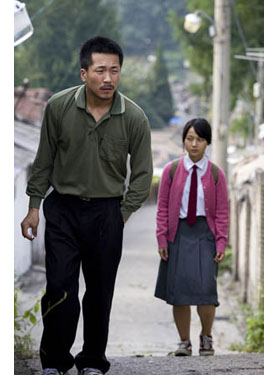 Also under the influence of classic crime films was Yang Ik-June’s Breathless from Korea (right). It shows a brutal debt collector coming to terms with his childhood. Under a harsh surface realism, the film has the contours of the familiar redemption of a hard case, including the decision to reform that comes a tad too late. (Whenever a crook vows that this will be the last time he pulls a job, wait for the ironic retribution.) I thought that the character parallels (two scenes of murdered mothers) were somewhat too neat, but the director plays the anti-hero with conviction and deadpan humor, and Kim Kkobbi supplies an exhilarating turn as the tough high-school girl who becomes his companion.
Also under the influence of classic crime films was Yang Ik-June’s Breathless from Korea (right). It shows a brutal debt collector coming to terms with his childhood. Under a harsh surface realism, the film has the contours of the familiar redemption of a hard case, including the decision to reform that comes a tad too late. (Whenever a crook vows that this will be the last time he pulls a job, wait for the ironic retribution.) I thought that the character parallels (two scenes of murdered mothers) were somewhat too neat, but the director plays the anti-hero with conviction and deadpan humor, and Kim Kkobbi supplies an exhilarating turn as the tough high-school girl who becomes his companion.
Bong Joon-ho has been something of a leitmotif on this site lately, with my comments on Influenza and Mother. Under the rubric “Bong Joon-Ho & Co.,” Dragons and Tigers screened a collection of shorts paying tribute to the Korean Academy of Film Arts. Most were from the 2000s, but Kim Eui-suk’s Chang-soo Gets the Job, dated from 1984. Focusing on a gang of teenage purse snatchers, Kim’s film was a little rough technically, but it built its story deftly. The quality of the rest was quite strong, with the grisly and wacky Anatomy Class (2000, Zung So-yun) being a high point. Meanwhile, Bong’s Incoherence (1994) shows that his urge to deflate official hypocrisy, seen in Memories of Murder and The Host, was already present in his student days.
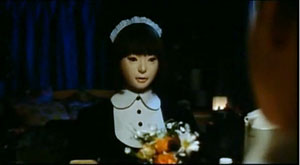
My admiration for Hirokazu Kore-eda runs high, as I indicated in my discussion of Still Walking at last year’s VIFF. But Air Doll, while full of vagrant pleasures, left me unsatisfied. The Kafkaesque premise, derived from a manga, is that an inflatable saucy-French-maid dolly comes to life, endowed with speech and movement but retaining her seams and air valve (both of which will figure in the plot). Her sad-sack owner doesn’t notice the transformation, but while he’s at work, she takes a job at a video store and wanders the city.
The aim, I think, is to defamiliarize ordinary city life by seeing it through Nazomi’s eyes. The fact that a sex effigy is the most innocent character in the movie is part of the point. Makeup, money, and fashion start to seem extensions of sad, solitary eroticism, and the line between mainstream movies and porn gets blurred. But all the thematic elements didn’t blend very well, and at moments, as during the music montages showing people’s desperate loneliness, I worried that for once Kore-eda had slipped into conventional sentimentality. The tone also shifts, with a climax that revises the big scene of In the Realm of the Senses. Kore-eda deserves credit for his unflagging effort to try something fresh with every project, but here, it seemed to me, that the film was defeated by an overcute conceit and underdeveloped execution.
The most exciting Asian film I saw at VIFF was Liu Jiayin’s Oxhide II. Her first feature, Oxhide, was screened at Vancouver in 2005. (Full disclosure: I was on the jury that awarded that film the D & T prize.) This one seemed to me even better.
To say that this 132-minute film is about a family making dumplings is accurate but misleading. To add that the action consumes only nine shots makes it sound like an arid exercise. In fact, it’s a consistently warm, engaging—I don’t hesitate to say entertaining—film that is also a demonstration of how a simple form, patiently pursued, can yield unpredictable rewards.
In the first Oxhide, we saw the comedy and tensions of Liu’s life with her parents, who run a leatherwork shop. By the time she shot part two, they had already lost their business, but the sequel presupposes that the shop is still going, albeit coming to a critical point. So there’s a quasi-documentary aspect, as the family’s financial strains, discussed cryptically at various points, hover over the mundane process of wonton cookery. Yet although everything looks spontaneous, it was all completely staged—written out in detail, rehearsed over months, reworked in test footage, and eventually played out in “real time.”
And in real space. The first shot, which consumes twenty minutes, shows Liu’s father pummeling a hide in his vise and eventually clearing the table for serious food preparation.
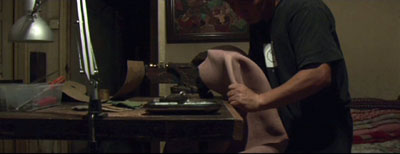
Actually, the film’s subject is that table. On its surface, a meal is prepared; around it, the family gathers; we even see what happens underneath. We watch father and mother chop scallions, mince pork, twist and yank dough, pinch the dumpling wrappers around the filling. We watch the daughter try to match her parents’ dexterity. This is a movie about housework as handiwork, and family routines and frictions.
For minutes on end, we see only hands and arms; Liu’s 2.35 frame often chops off faces. Liu employed a construction-paper mask to create the CinemaScope format within HD video. Why the wide frame? Most filmmakers use it for expansive spectacle, she remarks; but “I wanted to see less.” And the horizontal stretch further emphasizes the table.
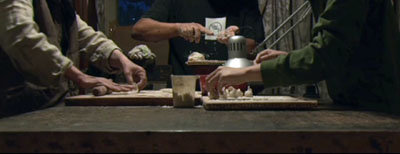
As if this weren’t rigorous enough, Liu has filmed the table from a strictly patterned arc of camera positions, dividing the space into 45-degree segments. These unfold in a clockwise sequence around the table. What could seem an arbitrary structural gimmick is justified by the fact that each setup proves ideally suited to each stage of the process. When father and mother team up to start the meal, the angle gives us two centers of interest. And Liu feels free to “spoil” her mathematical structure by varying the height and angle of her camera. Plates, bowls, and an articulated lamp become massive outcroppings in this micro-landscape.
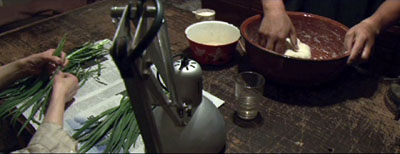
Oxhide II is unpretentiously inventive, quietly virtuosic. Evidently it took a Chinese filmmaker (whose day job is writing TV dramas) to blend domestic life with the rigor of Structural Film. Liu displays the fine-grained resources yielded by several cinema techniques, from framing and staging to lighting and sound. The finished dumplings get constantly rearranged on the cutting board. Each family member has a different technique for pulling off bits of dough, and each gesture yields its own distinctive snap.
I had to think, almost with pity, of all those US indie filmmakers who believe they have to cultivate CGI and slacker acting, to seduce investors and strain for outrageous sex and edgy violence. Liu made this no-budget, low-key masterpiece over years in a single room, and with her parents. That’s a new definition of cool.
Liu promises us another installment. In the meantime, every festival that’s serious about the art of cinema should pledge to show Oxhide II.
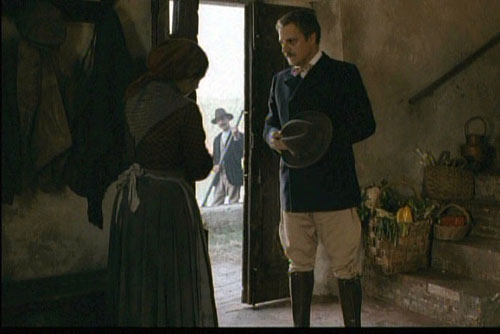
Puccini and the Girl.
PS 12 October: Thanks to Matthew Flanagan for correcting an embarrassing typo.
PS 15 October: Thanks to Ben Slater for correcting yet another one!
Revenge of the ROW
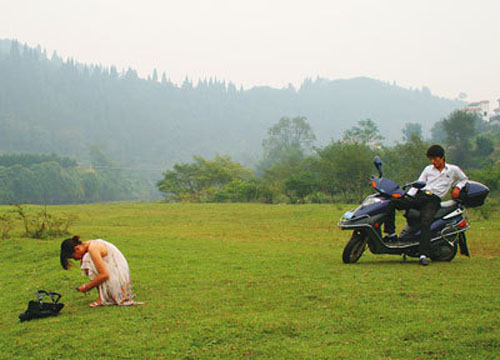
Sun Spots.
DB here:
Watching Congress on C-SPAN makes you realize that the dead outnumber the living. Likewise, going to a film festival like Vancouver’s drives home to you how many movies there are out there. The world produces about 5000 features per year. No more than fifteen per cent of those come from the United States. That leaves about 4300 from what Hollywood execs apparently, and disparagingly, call ROW—the Rest Of the World. And hundreds of those 4300 are fighting for spots at the film festivals that have sprung up around the globe. Hence the rise of the programmer, today’s art-film gatekeeper and tastemaker.
To be a programmer you must be knowledgeable, traveled, and well-networked. You have to be steeped in contemporary film, you have to make your way to obscure places, and you have to know the right people—filmmakers, producers, sales agents, critics you can trust. Hence the power of a festival like Vancouver’s. It has superb programmers like Tony Rayns, Shelly Kraicer, Mark Peranson, Terry McEvoy, Stephanie Damgaard, Tom Charity, Sandy Gow, Tammy Bannister, and their colleagues.
You could mount a perfectly respectable event by cherry-picking other festivals’ lineups, but Vancouver mixes current international hits with genuine discoveries. Vancouver’s recognized specialties, like new Asian film, documentary, and Canadian features, nicely counterbalance their obligation to bring to the community the latest in top-drawer films of all sorts. A user-friendly festival in an exceptionally welcoming and picturesque city, Vancouver remains a magnet for us and hundreds of other cinephiles. This is my fifth visit, and Kristin and I commented online in 2006 (start here), 2007 (start here), and 2008 (start here).
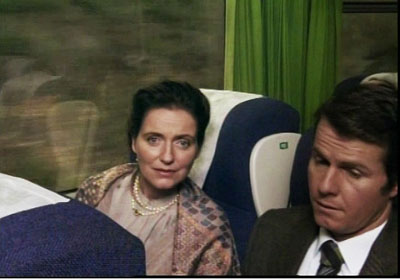
This year’s Vancouver doesn’t lack big-name attractions. Keeping up their dedication to Manoel de Oliveira (a ripe 100-plus years old), the programmers have brought us Eccentricities of a Blond Hair Girl, a sixty-minute package of pure pleasure. At first it seems a redo of Obscure Object of Desire. A man on a train recounts his frustrated efforts to marry a gorgeous young woman he glimpses at a window. But it turns out that this is an adaptation of a short story by Eça de Quieró, and things develop in very different directions than in Buñuel’s film. Oliveira’s characteristically chaste framings and sumptuous décor are enlivened by some errant formal devices that it would be a shame to divulge.
Okay, I’ll mention one because it kicks in from the start. On the train, Ricardo decides to tell his story to the woman sitting next to him. But while listening she usually looks straight into the camera. And every time she replies to his remarks, instead of turning to look at him, she delivers her lines directly to us. Ricardo looks at her, or sometimes just glances around as speakers do, but during her lines, the camera acts as a relay between her and him. You never quite get used to this strange displacement of dialogue, and it helps make Ricardo’s tale of archaic courtly love as subtly unnerving as the revelation that seals the couples’ fate. Whippersnapper directors a third Oliveira’s age would not dare so much.
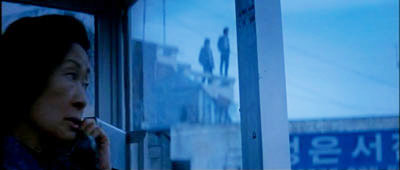
Another much-awaited title was Bong Joon-ho’s Mother, and the hopes I expressed in the previous entry weren’t disappointed. A mentally handicapped boy is accused of murder, and his mother leaps into action to find the killer. As in Bong’s earlier Memories of Murder, a mystery intrigue ramifies into the lives of disparate characters, so that we’re skittering between physical clues (a golf club, inscribed golf balls, a strangely positioned corpse) and psychological ones, with bits of behavior serving to suggest multiple motives. Each character continues to surprise us—in particular, the sneering wastrel who takes advantage of the son. Driving the plot and passing through a spectrum of emotional changes, of course, is the title character. There’s no shortage of movies called Mother (though we’re told this one should properly be translated as Mother/Murder), but veteran actress Kim Hye-ja as the indefatigable guardian of her boy is as memorable as Pudovkin’s and Naruse’s protagonists.
Bong’s compact compositions are always at the service of his storytelling. I couldn’t see any fat on the scenes. His fluent pacing squeezes suspense and surprise out of each plot convolution. While the mother talks to her boy in jail, the lawyer stands at a distance from them, and, slightly out of focus, checks his watch. Instantly we know that he’s uninterested in the case. But Bong also knows how to linger. One of the most memorable slow dissolves I’ve seen in recent years counterposes mother and son, sleeping alongside each other off-center, against a horrific discovery tucked against the other edge of the anamorphic frame.
Mother has plot to spare; it could loan some to Sun Spots. What hath Hou wrought? I thought during the first few minutes of this exercise in Asian minimalism. This relentlessly dedramatized tale of a fugitive triad who meets a sulky girl in the countryside is determined to deny us any significant action, intense emotion, or old-fashioned enjoyment. Long shots, some very distant; thirty-one single-take scenes; impassive actors smoking, staring, turning from the camera, and generally hanging out: We have been here before. After twenty years of masterpieces by Hou, Kore-eda (Maboroshi), and Jia Zhangke (Platform), this style risks mannerism.
Eventually, though, I shifted gears and came to respect the movie. First, the landscapes are ravishing, worthy of a James Benning film. (8 ½ x 11, in which narrative gestures are swallowed up in immense spaces, wouldn’t be an irrelevant comparison.) Second, many compositions develop in unpredictable ways, and you’re given enough time to scan the frame for clues to what has happened before we join the scene. You’re obliged to notice handbags, cellphones, fishing poles, and cigarette butts strewn across the visual field. Third, director Yang Heng has exploited one powerful advantage of HD video: razor-sharp depth of field. This allows him to integrate distant hills and streams into the action. You see everything sharp and fresh, even actions hundreds of yards away. The final nine-minute shot forms a kind of climax of spatial acuity. A couple, trailed by a solitary figure, drift away from us into a grove of trees, and they remain visible as patches of white and black for an achingly long time before finally disappearing. Here “vanishing point” takes on its full meaning. Unthinkable on DVD, Sun Spots lives fully on the big screen, and one has to respect Yang’s single-minded commitment to making an anecdotal plot into something austere and sensuous.
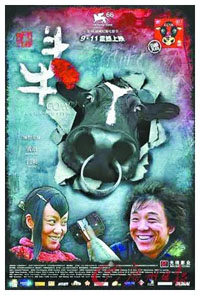 Sun Spots was a world premiere, and it illustrates just how committed Vancouver is to continuous discovery. Also in the revelations category is Guan Hu’s Cow, which takes us into the territory so successfully covered by Jiang Wen’s Devils on the Doorstep. (2000). The Chinese countryside is under siege from the Japanese, and survival is the name of the game. A village comes into possession of a huge European heifer and revels in her apparently boundless supply of milk. But the Japanese army has other ideas, and it’s up to the fumbling but plucky farmer Niu Er to protect the cow while evading the enemy. Cow is currently filling Chinese theatres, and the poster suggests a light-hearted adventure, but actually the comedy comes in a rather violent context. If told chronologically, the plot would turn steadily dark, so Guan adroitly uses flashbacks to keep offsetting horror with humor. Once more, popular cinema shows itself able to handle emotional extremes with a steady hand.
Sun Spots was a world premiere, and it illustrates just how committed Vancouver is to continuous discovery. Also in the revelations category is Guan Hu’s Cow, which takes us into the territory so successfully covered by Jiang Wen’s Devils on the Doorstep. (2000). The Chinese countryside is under siege from the Japanese, and survival is the name of the game. A village comes into possession of a huge European heifer and revels in her apparently boundless supply of milk. But the Japanese army has other ideas, and it’s up to the fumbling but plucky farmer Niu Er to protect the cow while evading the enemy. Cow is currently filling Chinese theatres, and the poster suggests a light-hearted adventure, but actually the comedy comes in a rather violent context. If told chronologically, the plot would turn steadily dark, so Guan adroitly uses flashbacks to keep offsetting horror with humor. Once more, popular cinema shows itself able to handle emotional extremes with a steady hand.
Kristin and I have already seen plenty of other films we want to commend to you, but hitting four screenings a day hasn’t left us a lot of time to blog. Still, we’re determined to bring you more comments on this wondrous festival’s offerings.
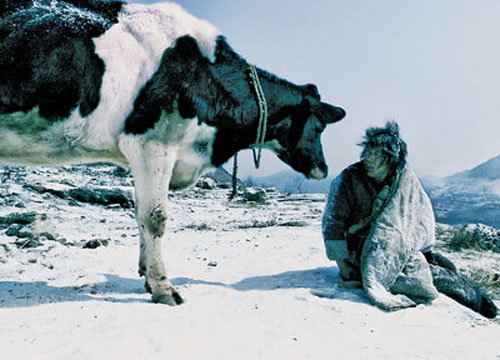
Cow.













